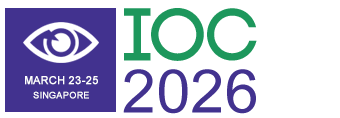Title : Clinical research on the efficacy of yishi mingmu pills combined with yishi tongluo exercises in the prevention and control of myopia in children and adolescents
Abstract:
Objective: To evaluate the efficacy of Yishi Mingmu Pills (a traditional Chinese medicine formulation) combined with Yishi Tongluo Exercise (a modified eye exercise) in children with early myopia and mild myopia due to deficiency of heart yang.
Methods: A randomised controlled clinical trial was conducted. A total of 98 children with pre-myopia and 90 children with mild myopia who visited the ophthalmology outpatient departments of Gansu Provincial Hospital of Traditional Chinese Medicine, Gansu Provincial Maternal and Child Health Hospital, Lanzhou First People's Hospital, and Lanzhou Purui Eye Care Hospital from January 2023 to January 2025 were enrolled. All children were diagnosed with heart yang deficiency syndrome. Children with pre-myopia and mild myopia were randomly divided into two groups in a 1:1 ratio based on their order of admission. The control group received conventional intervention, which included health education on eye habits, reading and writing posture, outdoor activities, sleep, and diet. The experimental group received additional training with Yishi Mingmu Pills combined with Yishi Tongluo exercises. Similarly, children with mild myopia were randomly divided into two groups in a 1:1 ratio based on their order of visit. The control group received health education and conventional correction with single-vision lenses, while the experimental group added training with Yishi Mingmu Pills combined with Yishi Tongluo exercises. All interventions lasted for three months. Changes in uncorrected visual acuity (UCVA), spherical equivalent (SE), axial length (AL), and traditional Chinese medicine syndrome scores were observed before and after intervention. The occurrence of severe adverse reactions in children in the medication and exercise combination group during the intervention period was also observed. The efficacy evaluation criterion was the myopia progression control rate (the proportion of stable myopia cases to the total number of cases). Data were analysed using SPSS 25.0 software.
Results: Before intervention, there were no statistically significant differences between the experimental and control groups in terms of UCVA, SE, AL, and systemic symptom scores in children with pre-myopia and mild myopia (P > 0.05). (1) UCVA: In children with pre-myopia and mild myopia, the visual acuity of children in the experimental group improved after 3 months of intervention (P(pre) = 0.001, P(mild) < 0.001), while the visual acuity of children in the control group decreased after 3 months of intervention (P(pre) < 0.001, P(mild) < 0.001). (2) SE: In children with pre-myopia, the progression of SE (d) in the intervention group after 3 months was smaller than that in the control group, with statistically significant differences (d (intervention) = 0.20 ± 0.21 D, d(control) = 0.31 ± 0.15 D, P = 0.012). In children with mild myopia, the progression of SE in the experimental group after 3 months of intervention was less than that in the control group (d(experimental) = 0.04 ± 0.10 D, d (control) = 0.22 ± 0.16 D, P < 0.001). (3) AL: There were no statistically significant differences in axial length changes before and after treatment between the two groups (P > 0.001). (4) Traditional Chinese medicine syndrome scores: In children with pre-myopia and mild myopia, the traditional Chinese medicine syndrome scores of the experimental group improved after 3 months of intervention (P(pre) < 0.001, P(mild) < 0.001), while those of the control group decreased after 3 months of intervention (P(pre) < 0.001, P(mild) < 0.001). (5) Myopia progression control rate: In children with pre-myopia, the myopia progression control rate was 77.8% in the experimental group and 58.1% in the control group; in children with mild myopia, the myopia progression control rate was 78.7% in the experimental group and 65.7% in the control group. (6) Safety observation: No severe adverse events occurred in children who took Chinese herbal medicine.
Conclusion: The combination of Yishi Mingmu Pills and Yishi Tongluo exercises can improve uncorrected visual acuity, delay equivalent spherical lens progression, and alleviate systemic symptoms in children with pre-myopia and mild myopia in the short term. Compared with conventional interventions, the combined therapy can stabilise the progression of myopia in children with pre-myopia and mild myopia, with good safety, and is worthy of promotion and application.




